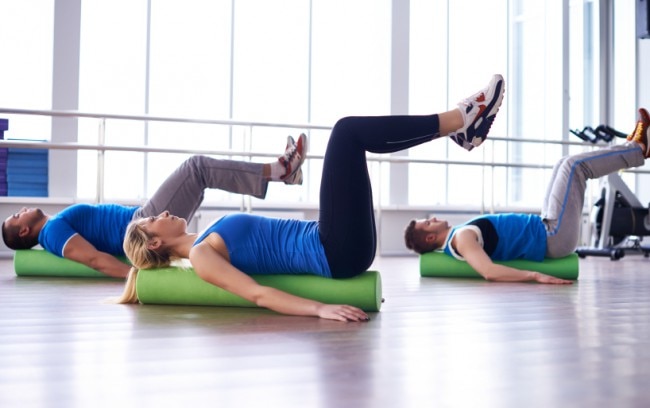They’re colorful, look like fun and are being used by everyone at the gym. But what do foam rollers actually do, and why should you try one? Whether you’re an athlete in training, a regular runner or an occasional exerciser, foam rolling – using a dense, foam cylinder to apply pressure to different areas of your body – helps with recovery. Think of it as getting a post-workout massage—only it’s less expensive and much easier to fit into your schedule.

Besides helping to ease tight, painful muscles, foam rolling increases blood flow to an area, delivering essential nutrients that muscles need for recovery and helping to repair damaged tissue. It helps keep connective tissues loose and your muscles elastic and healthy.
Foam rolling can be done anywhere, anytime. After a workout is ideal, but you can also do it while watching TV or before bedtime. It only takes 10 to 15 minutes, once or twice a week, for therapeutic results.
Try incorporating these these top foam-rolling exercises into your workout plan. Aim for 30 to 60 seconds for each move.
Back
- Sit on the floor with the foam roller against your lower back and hands resting behind you.
- Bend your knees and slowly move the roller up and down your back (to just below your shoulder blades).
Hamstrings
- Sit on the floor with your right leg on the roller and your left ankle over your right ankle (with left knee slightly bent). Place hands behind you on the floor.
- Move the roller up and down from your knee to just below your glute muscle. Switch legs and repeat.
Calves
- Sit on the floor with your legs straight out, hands behind you and roller under both calves.
- Move the roller slowly from your ankles to back of your knees.
Quads
- Rest on the floor, in plank position propped on your elbows. Place the roller under your thighs.
- Using your arms, roll up and down on the roller covering the full length of your quad muscle (stop at the knee).
Hip flexors
- Lie on your stomach with one side (hip) on the roller. Position your opposite leg slightly off the roller.
- Roll up and down slowly along your hip.
- Repeat on other side.
Shins
May help with preventing shin splints.
- Prop yourself on all fours with the roller under your shins. Keep hands firm on the floor.
- Roll your knees toward your hands, stopping right above your ankles.
- Roll back to starting position.
